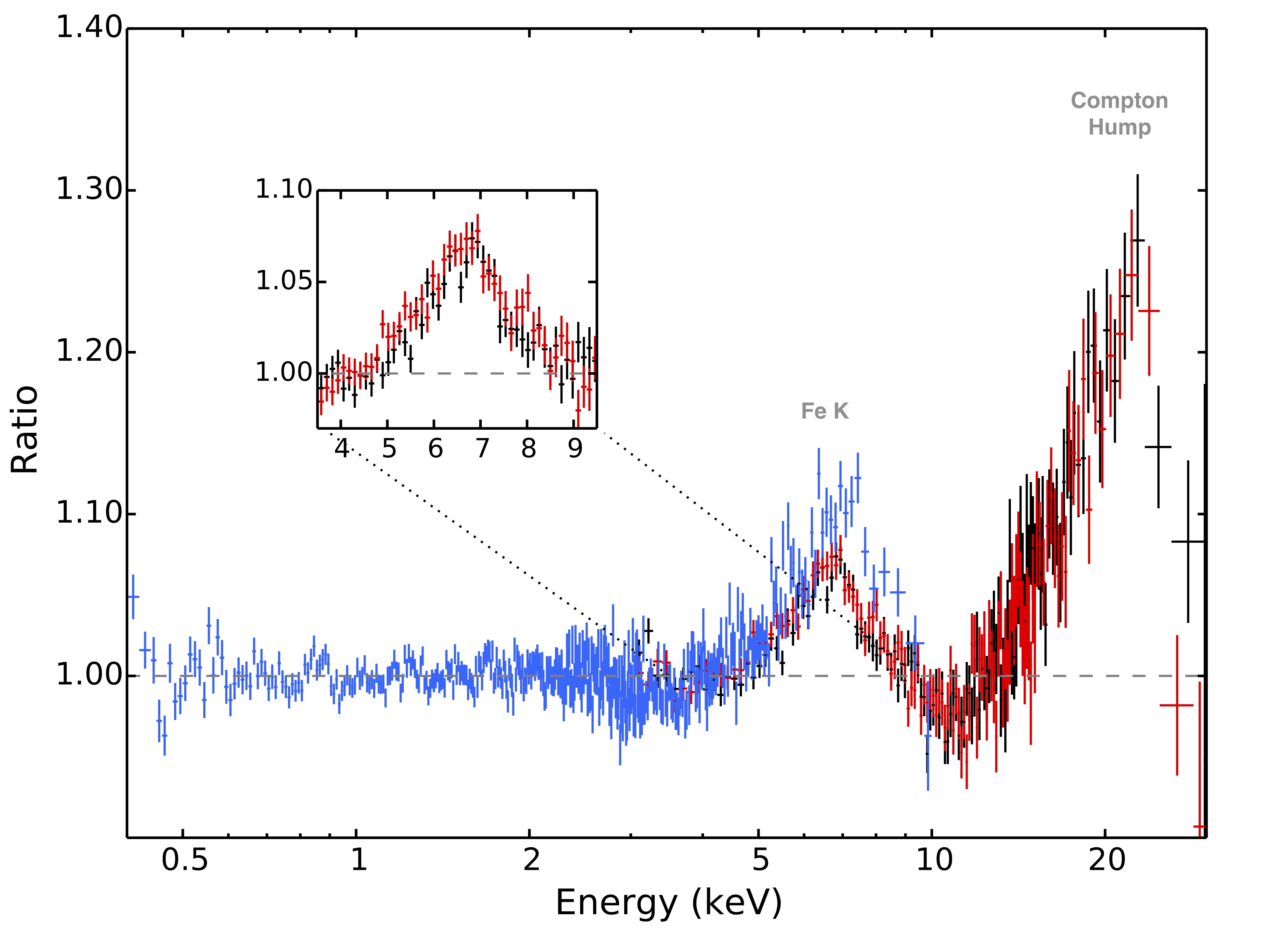NICER / ISS Science Nugget
for April 30, 2020
The NICER-NuSTAR view of the Neutron Star Low-mass X-ray Binary 4U 1735-44
4U 1735-44 is a low-mass X-ray binary that contains a neutron star accreting from a star that is approximately the mass
of our Sun. Simultaneous X-ray observations of the system were obtained with NICER and NASA's Nuclear Spectroscopic
Telescope Array (NuSTAR) on August 9th, 2018, for 9.2 ks and 17.7 ks exposures, respectively. The source varied over
the course of the observations at the 10% level (see Figure 1).

Figure 1:
Light-curve of 4U 1735-44 from the NuSTAR and NICER observations that occurred on August 9th, 2018. The grey dashed
line indicates the average count rate for both missions.
The energy spectra show an iron K-shell emission feature around 6.4 keV and a Compton backscattering hump above 15 keV
due to the reprocessing of photons from the neutron star by the surrounding accretion disk — these features can be
seen in Figure 2. The emission from the Fe line is intrinsically narrow, but becomes broadened due to Doppler, special-
and general-relativistic effects. Thus, the broadening that we see in the line is a measure of how close the accreting
material is to the neutron star.

Figure 2:
Ratio of the NICER (blue) and NuSTAR (black and red) data to the continuum model. Emission features can be seen near 6
keV from the Fe K-shell and above 15 keV due to Compton backscattering of photons by the free electrons in the
accretion disk. The broad shape of the Fe line is a product of how close the material is to the neutron star.
We use two independent models to account for the reprocessed emission and determine that the disk is close to the last
innermost stable circular orbit (a feature unique to relativistic, strong-gravity systems) regardless of which model is
used. From measuring the position of the inner radius of the accretion disk, we are able to place an upper limit on the
magnetic field strength of the neutron star to be < 4.6x108 G. This is in agreement with the magnetic field strength of
other accreting neutron star low-mass X-ray binaries. Additionally, it is likely that there is a boundary layer region
between the inner edge of the accretion disk and the surface of the neutron star where the material becomes radiation
pressure-dominated as it slows down to match the rotation of the neutron star.
This study, led by Dr. Renee Ludlam (Caltech) and accepted for publication this week in The Astrophysical Journal, lays
the foundation for future observational analyses using both missions, while also demonstrating the synergy between
NICER and NuSTAR when searching for emission features in these systems.
<< Previous
Main Index
Next >>